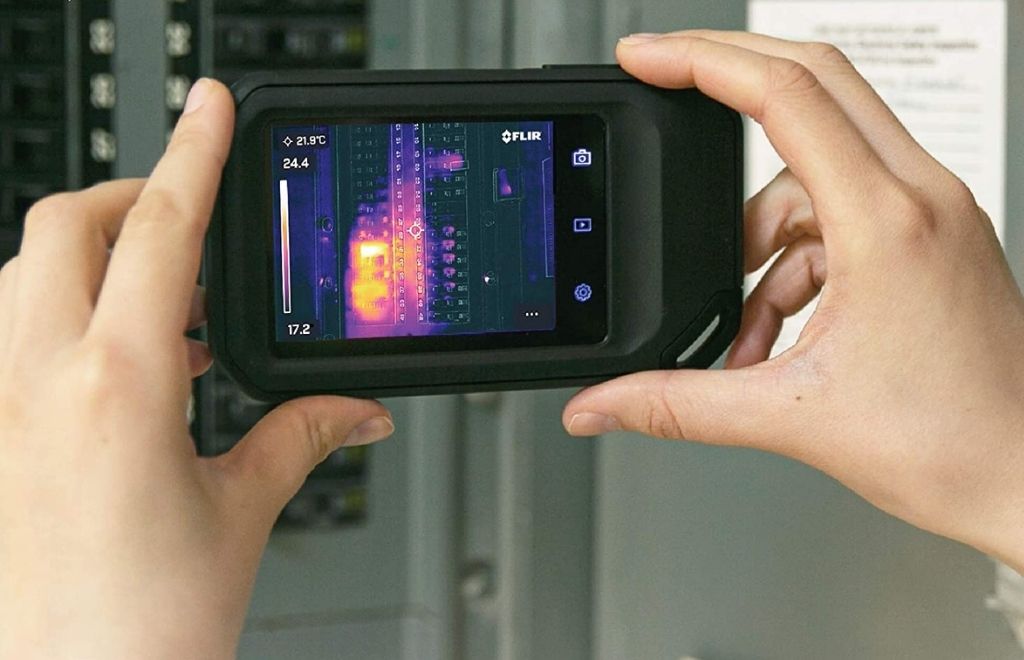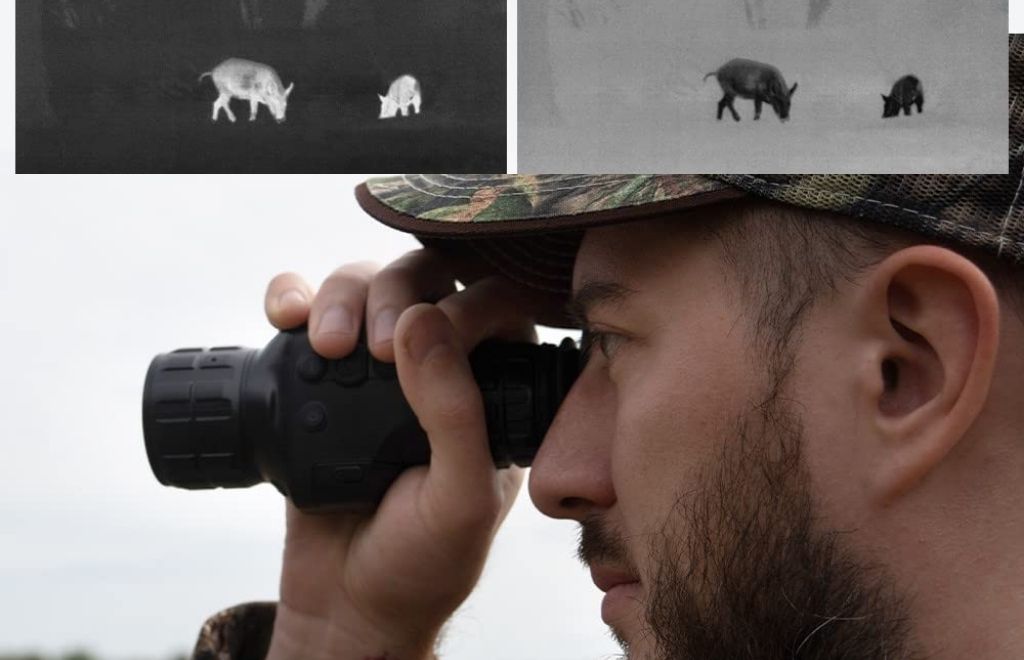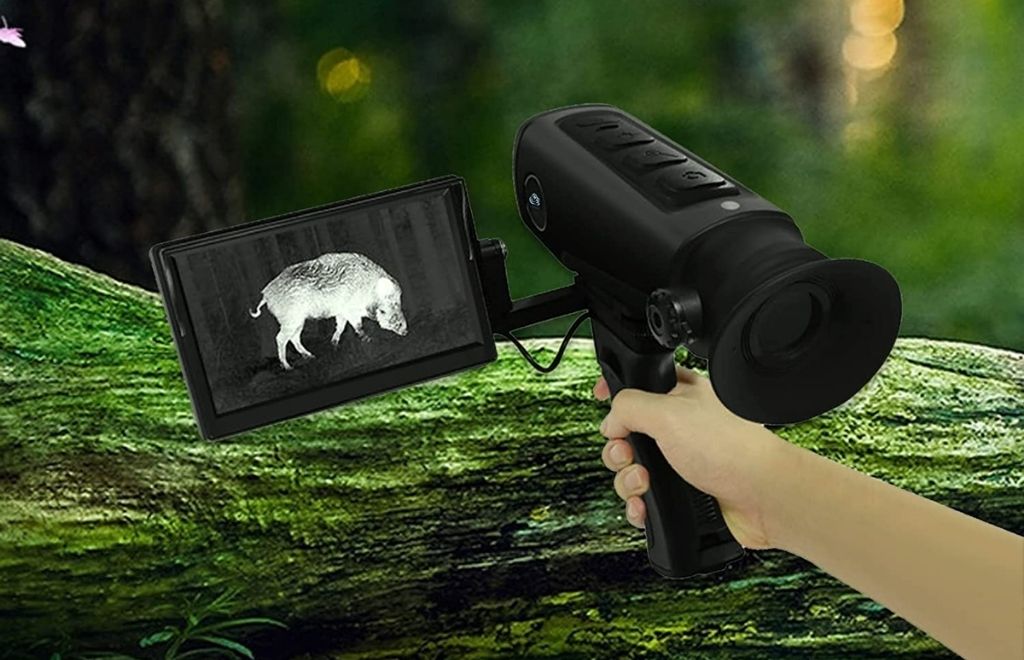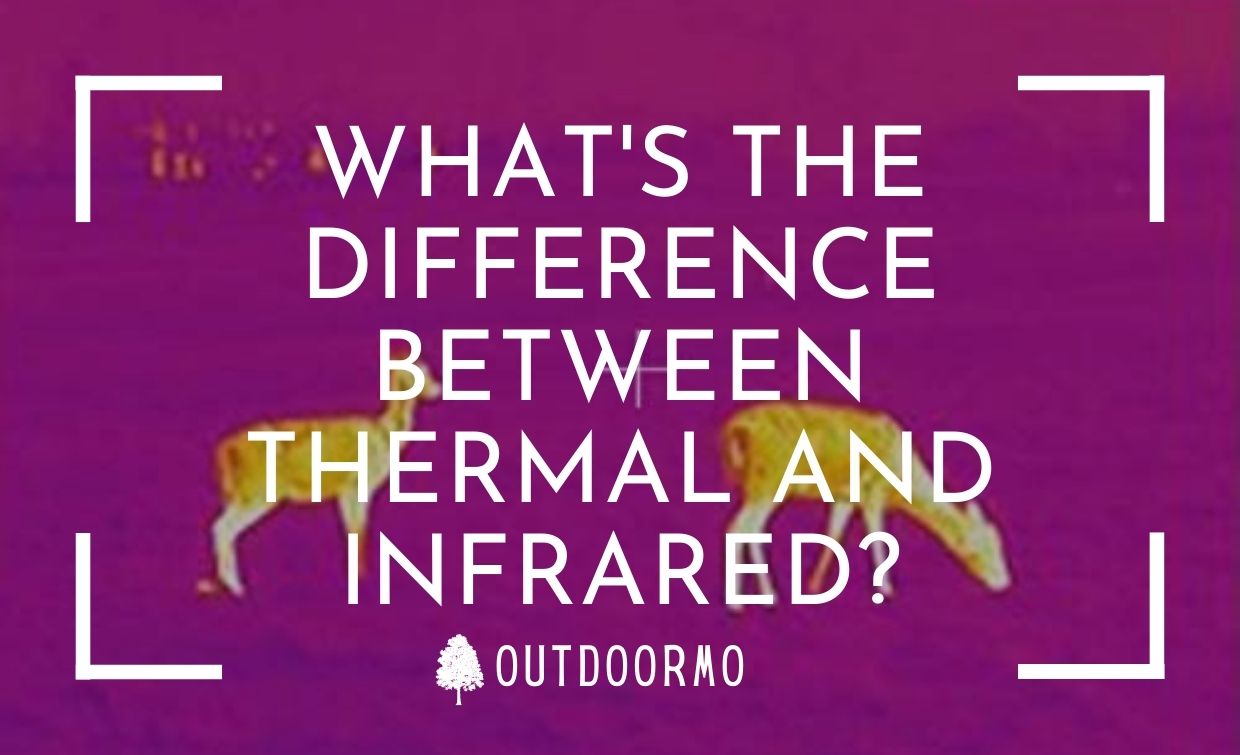The human body is a limited biological machine. It functions well in normal conditions, but there are specific scenarios where it can’t see or sense objects. Because of this, various improvements have been made in tools and equipment like thermal imagers and night vision cameras so that we can see the world in a different visible light.
Thermal and infrared imaging are two clear examples of such systems. At the end of this article, you will be able to answer the question: whats the difference between thermal and infrared as we will look at the differences between the two to help you make a choice if you are in the market for the top thermal monoculars.
How does Thermal Imaging work?
Thermal imaging is also called infrared thermography. From its root phrase, one can extract the words Thermo which means heat, and graph, which means writing. In layman’s terms, it is defined as writing with heat using infrared data or thermal energy coming from radiation.
All things that emit heat also have infrared radiation or thermal energy and the hotter an object or target is, the more thermal energy it releases. Specialized sensors from thermal cameras detect heat, catch these readings and assign colors to them based on their temperature or heat signature.
While coldblooded creatures like snakes and alligators will be more difficult to see, humans, animals, and vehicles all produce heat and are typically warmer than their surroundings, making it possible for a thermal imager user to get a good look at them because their body temperature adjusts to temperature differences in their surroundings. Thermal imagers don’t need any visible light to create an image because they detect radiation.
This heat map shows a full live image with their respective saturations. The processor of the lens from the thermal imaging camera will gather data and turn them into a visible video feed for the user. Thermal energy is invisible to cameras that can detect visible light, and vice versa.

How does infrared work?
Active IR or infrared cameras work by detecting reflected light energy emitting from a short wavelength of infrared coming from a source in the electromagnetic spectrum. With a thermal camera or sensor that receives reflected data, full thermal images can be interpreted by the processor.
Reflected light is like visible light to our eyes so the same basic principle underlies the operation of daylight cameras, night vision devices, and the human eye: after striking something and reflecting off of it, visible light energy strikes a detector, which then collects it and converts it into a picture. These detectors must get enough light in order to function, whether they are in a camera or an eyeball.
Since infrared relies on an active source of visible light, there are limits to the range of an active IR. However, they produce good images since there is a lesser need for processing and transference from heat maps to visible video.
Another thing to note is that fog and dust produce difficulty for infrared imaging to create usable images. This is because the wavelengths produced will mirror and reflect the fine particles and cause impedances in the sensor devices and processors.
Which is better for hunting?
In terms of hunting, it is on a case-to-case basis. There are certain advantages that IR offers compared to thermal imaging. Let us talk about some of them.
Thermal Imaging
Does not need light. One great advantage that thermal imaging has is that it acts passively. Using thermal imaging cameras or night vision devices means that it does not need a visible light source to work perfectly. Thus, regardless of poor lighting conditions at night, these thermal imagers have great benefit in night hunting especially where the naked eye cannot see through thereby aiding night vision. Also, it will not produce an interference when viewing through fog and dust.
High distance coverage. Another benefit that thermal imaging brings during hunting is range. Since it does not need a short-wavelength source, the detected range is higher. Thus, hunters will have more room for vision and tracking games or fowl using these thermal cameras.
Infrared Imaging
Better Image. One great advantage with infrared imaging is a higher image quality due to reflected visible light. Short wavelength infrared light is used in infrared imaging to illuminate a target area. A thermal image is created when some of the infrared energy is reflected back to a camera and processed. Infrared systems for thermal imaging use IR light with a mid- or long wavelength.

The decision
Deciding between the two should be a matter of preference. If you are a hunter who likes short-range targets and desires a clearer view of the subject, I will recommend thermal imaging cameras to improve night vision when there isn’t enough visible light to aid thermal vision while hunting at night.
I would also recommend it for beginners looking for the best entry level thermal monocular but are on a budget because it costs less than infrared imagers, and it can be a huge help if you are short on budget.
On the other hand, long-range night hunters must always prefer the comfort of thermal imaging. This is because it does not have any light source, meaning that you will have a wider observation angle and distance from targets. Note that most thermal imagers with precise and high resolution cost hundreds, even thousands of dollars.
Can these thermal cameras and imagers be applied to monoculars?
If you are a monocular enthusiast asking whether such techniques apply to monoculars, then the answer is yes. You see, sensors for both infrared and thermal imaging are small enough to fit in small equipment. Not only that, but processors have come a long way to be produced in micrometers, which means that a small monocular can pack enough power to relay information.
However, it must be noted that high-quality thermal imaging cameras, infrared camera devices, night vision devices and monoculars are usually costly. This is because the raw materials needed to produce greater resolution in a handheld thermal monocular are not cheap. Finding a thermal imaging monocular should be easy as long as you have the budget.
Produced visible light image
Because they rely on different technologies, it is only normal that they also have varied image or video outputs. In this section, you will know what to expect from thermal and infrared imagers, as well as what happens when nearby visible light energy hits them.
Thermal energy imagery
Output in thermal imaging cameras consists of heatmaps. Thus, it is common to see a spectrum of reds and blues in the final picture. Blue colors mean that it is colder, while the opposite happens in reds as it means that an object emits more infrared or radiate thermal energy. With this is in mind, one can quickly relate temperature differences on the live feed of a thermal imager.
Infrared imagery
Infrared imagery does not involve any temperature or radiation. As it relies on reflected light, the imagery released consists mainly of one hue. It is commonly white or green, but the resolution is finer and clearer. This is better than fast-detect visible daylight cameras but anything that uses reflected light for imaging has its imaging performance constrained by the quantity and intensity of the reflected light.

Final Thoughts
Infrared and thermal imaging serve the same purpose: they help us see where we normally can’t. However, the technologies behind these systems are different. This results in varied results and limitations.
Nevertheless, if you are to make a choice between getting a thermal monocular vs night vision device, I recommend going for infrared imagers for a short-range hunter who is on a tight budget but wants to improve the experience.
On the other hand, thermal imaging works best for those who favor long-range and unlimited potential despite pitch-black environments. Nevertheless, they both have their strengths and weaknesses. However, a good thermal imager should produce great images as long as they are quality. Remember this in your next purchase!

